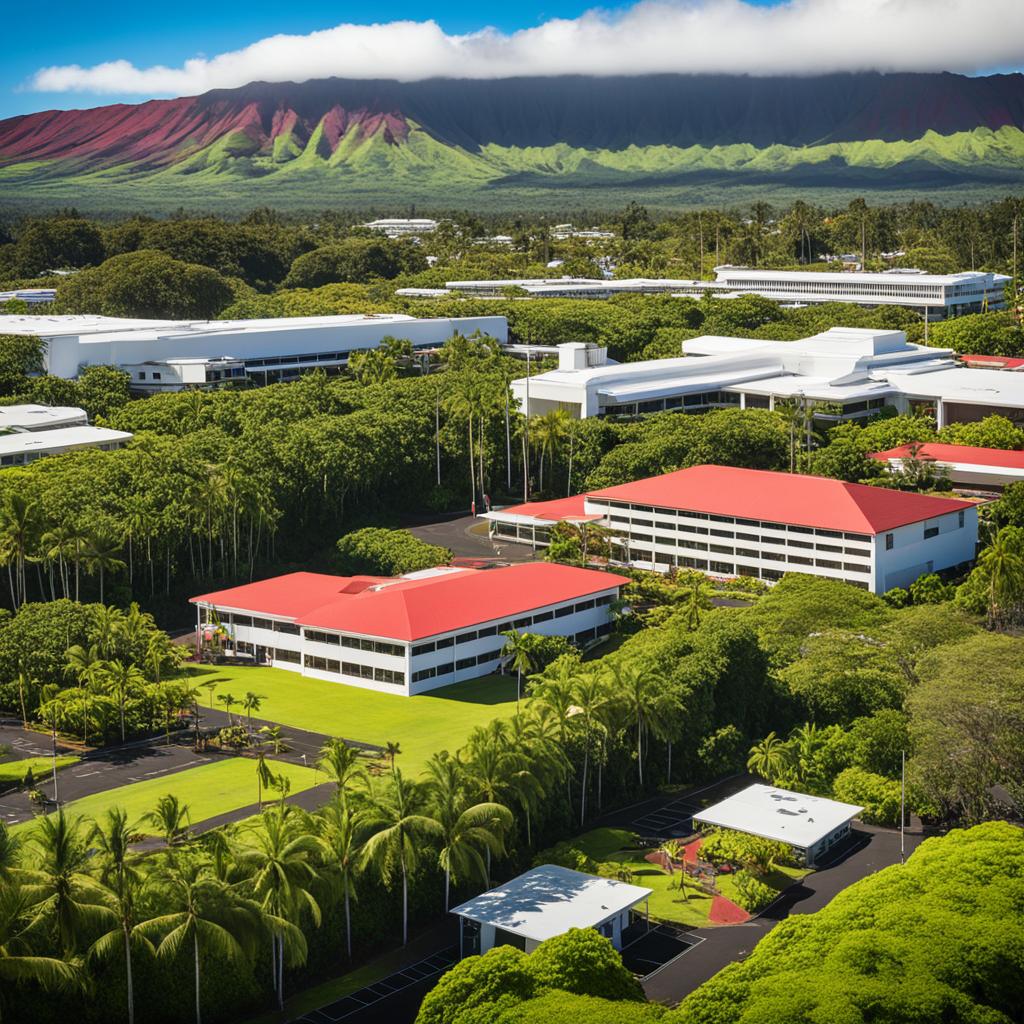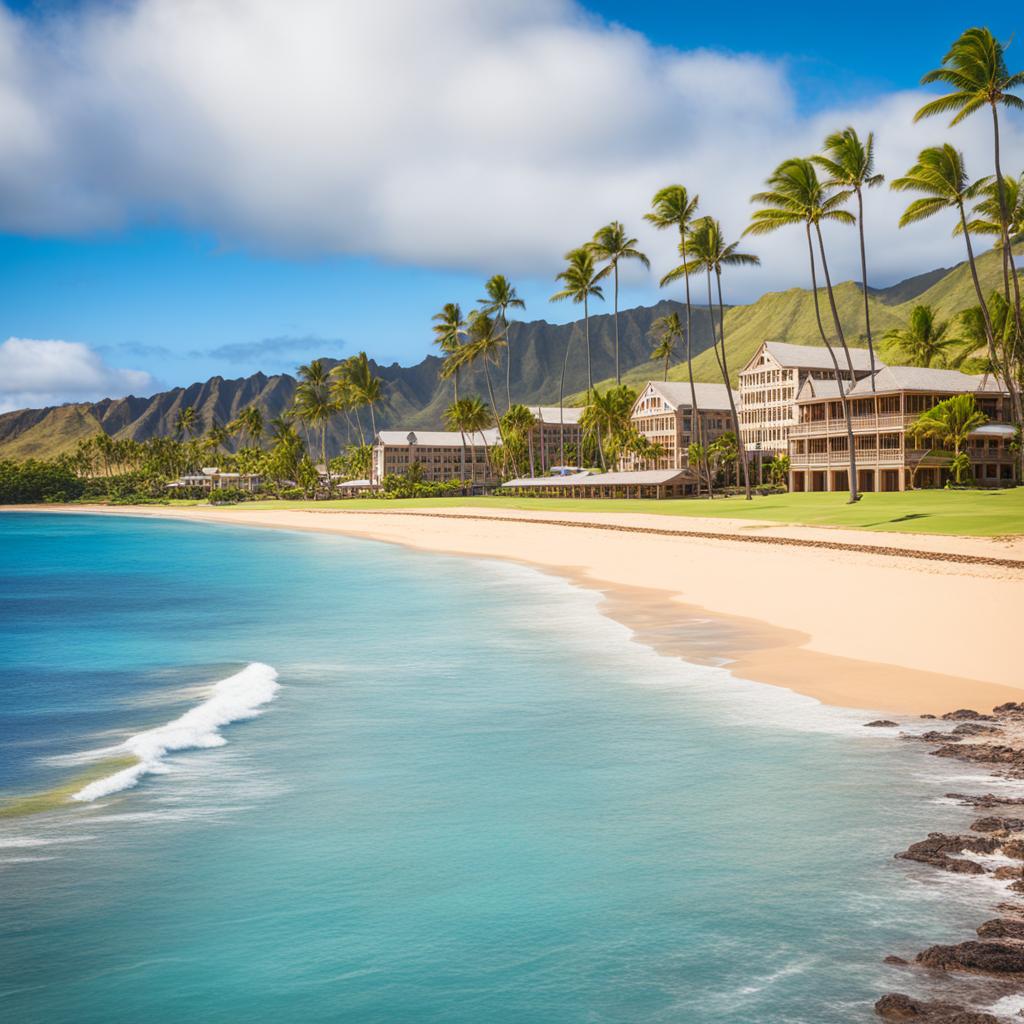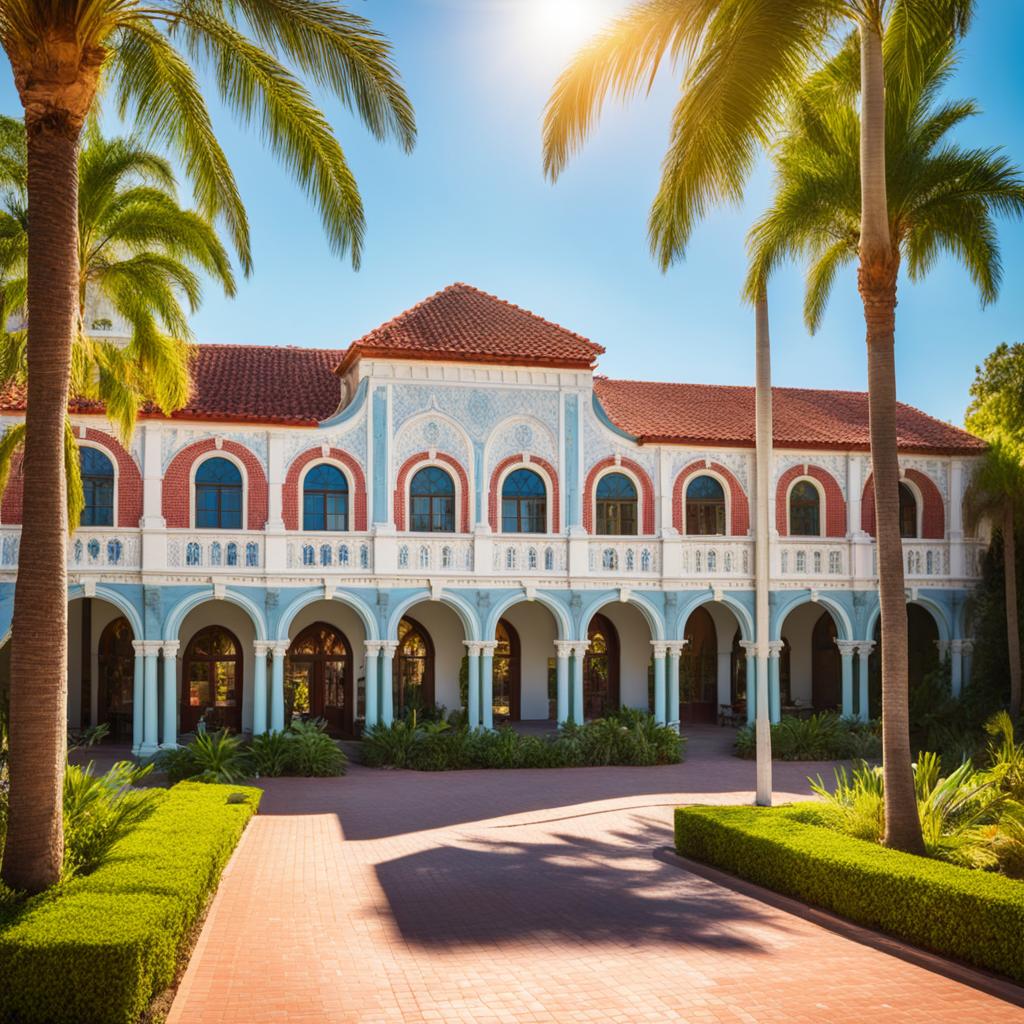When exploring the rich history of education in Hawaii, one can’t help but wonder about the oldest school in the state. Education has played a pivotal role in shaping Hawaii’s society, and the oldest school stands as a testament to the enduring commitment to learning in the islands.
Ancient education in Hawaii was passed down through songs and dances, but formal education as we know it today began with the arrival of American missionaries in 1820. These missionaries saw the importance of education and sought to establish schools to teach Christianity and literacy to Native Hawaiians.
One such school, Lahainaluna High School, holds the distinction of being the oldest school in Hawaii. Founded in 1831 as Lahainaluna Seminary, it continues to educate students to this day. Over the years, it has evolved, transformed, and adapted to meet the changing needs of its students and the community.
While Lahainaluna High School is the oldest, it is not the only historic school in Hawaii. The state boasts other notable institutions such as Hilo High School and Lolani School, each with its fascinating story and contributions to education in Hawaii.
Join us as we delve into the history, legacy, and importance of these historic schools, and explore the educational heritage that has shaped the lives of countless students in the beautiful Aloha State.
Lahainaluna High School: The Oldest School in Hawaii
Lahainaluna Seminary, now known as Lahainaluna High School, holds the honor of being the oldest school in Hawaii. Established in 1831 by American missionaries, this historic institution is located in Lahaina, Hawaii. It started with just 25 students and was under the supervision of the American Board of Missions.
Over the years, Lahainaluna Seminary underwent significant transformations, evolving from a vocational trade school to a public technical high school. Today, it stands as a college, career, and citizenship-ready institution, adapting to the changing needs of its students and community.
Emphasizing the importance of practical skills, Lahainaluna High School offers a diverse range of programs, ensuring students are prepared for their future endeavors. From traditional academics to vocational training, the school’s curriculum is designed to foster well-rounded individuals.
At Lahainaluna High School, students have the opportunity to pursue their passions and explore different fields. Whether it’s through the robust arts program, innovative science courses, or athletic teams, the school encourages students to embrace their unique interests.
Notable Alumni of Lahainaluna High School:
- David Malo – Native Hawaiian historian and scholar
- Samuel Kamakau – Historian and aliʻi (chief) of the Kingdom of Hawaii
- Keola Beamer – Hawaiian musician and composer
Lahainaluna High School Facts:
| Location | Founded | Current Status |
|---|---|---|
| Lahaina, Hawaii | 1831 | Active |
| Principal | Noah Nakamura | |
| Student Enrollment | Approximately 1,000 |
As the oldest school in Hawaii, Lahainaluna High School stands as a testament to the enduring legacy of education in the islands. It continues to play a vital role in shaping the lives of its students, providing them with a strong foundation to pursue their dreams and contribute to their communities.
Hilo High School: A Legacy of Education in the Big Island

Hilo High School, located in Hilo, Hawaii, has a rich history of providing quality education to the students of the Big Island. Established in 1906, the school was created to address the need for a local high school in Hilo, eliminating the inconvenience of traveling to Oahu for high school education. Although it faced limited public support initially, Hilo High School quickly gained popularity and has since become a prominent educational institution in Hawaii.
Over the years, Hilo High School has undergone several relocations and expansions to accommodate the growing student population and evolving educational needs. Despite these changes, it has remained steadfast in its commitment to providing a well-rounded education and preparing students for success in their future endeavors.
The school is known for its dedication to academic excellence, offering a wide range of courses and extracurricular activities to cater to diverse student interests and talents. Hilo High School takes pride in its legacy of producing accomplished alumni who have excelled in various fields, including academics, arts, sports, and community service.
With a strong focus on fostering a supportive learning environment, Hilo High School prioritizes the holistic development of its students. The school encourages students to explore their passions, develop critical thinking skills, and actively contribute to their communities.
At Hilo High School, students are not only provided with a quality education but also equipped with the necessary tools and knowledge to thrive in a rapidly changing world.
Key Features of Hilo High School:
- Diverse and comprehensive curriculum
- A broad range of extracurricular activities
- Dedicated and experienced faculty
- Strong community partnerships
- State-of-the-art facilities
- Supportive and inclusive learning environment
By preserving and promoting educational institutions like Hilo High School, we honor the historical significance of these schools and the role they play in shaping the future of education in Hawaii. These institutions serve as a testament to the enduring commitment to knowledge, growth, and community.
| Year Established | Location | Key Features |
|---|---|---|
| 1906 | Hilo, Hawaii |
|
Lolani School: From Missionary Education to Modern Learning

Lolani School, formerly known as St. Alban’s College, has a rich history that dates back to its founding in 1862 by Anglican Episcopal Church missionaries. Initially, the school underwent several changes in location and name before finally settling on its current campus in Honolulu.
Throughout the years, Lolani School has transformed from a small mission school for boys to a comprehensive K-12 institution. It has successfully adapted to the evolving educational landscape of Hawaii, combining traditional teaching methods with modern approaches to provide students with a well-rounded education.
At Lolani School, the emphasis is not only on academic excellence but also on holistic development. The school believes in nurturing students academically, socially, and emotionally, preparing them to thrive in a rapidly changing world.
With a dedicated faculty and staff who are committed to the success of every student, Lolani School creates a supportive and inclusive learning environment. The school offers a wide range of extracurricular activities and opportunities for students to explore their interests and develop their talents.
Today, Lolani School stands as one of the historic schools in Hawaii, providing a strong educational foundation and fostering a love for learning in generations of students.
Notable Features of Lolani School:
- A comprehensive K-12 institution
- Blending traditional and modern teaching methods
- Emphasis on holistic development
- Dedicated faculty and staff
- Supportive and inclusive learning environment
- Wide range of extracurricular activities
Other Historic Schools in Hawaii

Hawaii is home to several other historic schools that have made significant contributions to the education landscape in the state. These schools have a rich history and continue to provide quality education to their students.
Here are some of the notable historic schools in Hawaii:
- Punahou School
- Sacred Hearts School & Early Learning Center
- Iolani School
- St. Andrew’s Schools
Each of these schools has its own unique story and has played a vital role in shaping the educational experiences of countless students in Hawaii. Let’s take a closer look at each of these institutions:
| School | Location | Year Founded |
|---|---|---|
| Punahou School | Honolulu | 1841 |
| Sacred Hearts School & Early Learning Center | Honolulu | 1909 |
| Iolani School | Honolulu | 1863 |
| St. Andrew’s Schools | Honolulu | 1867 |
These historic schools have made a lasting impact on education in Hawaii, and their commitment to providing quality education remains strong. They serve as institutions of learning, fostering the growth and development of students in various academic and extracurricular fields.
Exploring the history and achievements of these schools offers valuable insights into the educational heritage of Hawaii and the legacy of excellence they have established.
The Importance of Preserving Hawaii’s Educational Heritage
Preserving the heritage of Hawaii’s historic schools is vital in recognizing the contributions they have made to the education system in the islands. These schools have played a significant role in shaping the lives of countless students and have become cultural landmarks in their communities. By preserving and celebrating these schools, we honor their legacy and ensure that future generations understand the importance of education and its impact on society.
Education heritage in Hawaii is a testament to the commitment and dedication of educators who have shaped the minds of generations. Preserving these historic schools allows us to connect with the past and appreciate the progress we have made in education. It serves as a reminder of the values and traditions that have shaped the educational landscape in Hawaii.
These historic schools stand as a symbol of resilience and perseverance. The challenges these institutions have faced throughout history are a testament to their commitment to providing quality education. Preserving their legacy ensures that their stories are not forgotten and that their impact is recognized.
Furthermore, historic schools serve as important cultural landmarks in their communities. They are often located in historic buildings that carry architectural and historical significance. Preserving these schools helps maintain the character and charm of communities, attracting visitors and enhancing local pride.
Finally, educating future generations about the importance of preserving historic schools instills a sense of pride and appreciation for the educational heritage of Hawaii. By understanding the challenges and triumphs of the past, students can gain a deeper understanding of the value of education and its role in shaping society.
- Preserving historic schools allows us to honor the educators who have dedicated their lives to teaching and shaping young minds.
- It helps maintain the architectural and historical significance of these buildings, contributing to the overall cultural heritage of Hawaii.
- By preserving these schools, we ensure that future generations can learn from the past and appreciate the progress made in education.
Preserving Hawaii’s educational heritage is not just about the physical buildings; it is about preserving the values, traditions, and stories associated with these historic schools. By recognizing their contributions and elevating their legacy, we can ensure that education continues to thrive in Hawaii for years to come.
Conclusion
Hawaii boasts a rich history of education, with a number of schools that have stood the test of time. Lahainaluna High School, Hilo High School, and Lolani School are among the oldest educational institutions in the state. Throughout the years, these schools have demonstrated their resilience by adapting and evolving to meet the changing needs of their students and communities. Preserving the legacies of these historic schools is crucial in comprehending the development of education in Hawaii and its profound impact on the state.
Education in Hawaii has deep roots, starting with the traditional transfer of knowledge through songs and dances. However, it was the arrival of American missionaries in 1820 that brought formal schooling to Native Hawaiians. Lahainaluna Seminary, founded in 1831, stands as a testament to this history. Today, Lahainaluna High School continues to provide education that is both academically rigorous and responsive to the needs of its diverse student body.
In addition to Lahainaluna High School, Hilo High School and Lolani School are notable examples of historic schools in Hawaii. Established in 1906, Hilo High School has been a prominent educational institution on the Big Island, adapting and expanding over time to meet the educational needs of the local community. Lolani School, founded in 1862 as a mission school for boys, has grown into a comprehensive K-12 institution, combining traditional and modern teaching methods.
FAQ
Q: What is the oldest school in Hawaii?
A: The oldest school in Hawaii is Lahainaluna High School, formerly known as Lahainaluna Seminary, which was established in 1831 by American missionaries.
Q: What is the history of Lahainaluna High School?
A: Lahainaluna Seminary was founded in 1831 and has evolved over the years to become a vocational trade school, a public technical high school, and finally a college, career, and citizenship-ready institution.
Q: When was Hilo High School established?
A: Hilo High School was established in 1906 to provide high school education to the students of Hilo, Hawaii.
Q: How did Hilo High School gain popularity?
A: Hilo High School gained popularity when people realized the inconvenience of traveling to Oahu for high school education.
Q: What is the history of Lolani School?
A: Lolani School has its roots in St. Alban’s College, which was founded in 1862 by Anglican Episcopal Church missionaries, and has evolved from a small mission school for boys to a comprehensive K-12 institution.
Q: Are there any other historic schools in Hawaii?
A: Yes, there are several other historic schools in Hawaii, including Punahou School, Sacred Hearts School & Early Learning Center, Iolani School, and St. Andrew’s Schools.
Q: Why is preserving Hawaii’s educational heritage important?
A: Preserving the heritage of Hawaii’s historic schools is important to recognize their contributions to the education system and to honor their legacy.
Q: What is the significance of historic schools in Hawaii?
A: Historic schools in Hawaii have played a significant role in shaping the lives of students and have become cultural landmarks in their communities.
